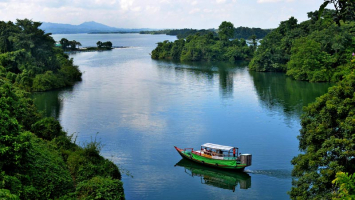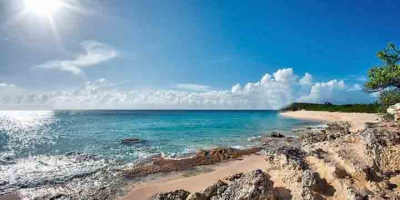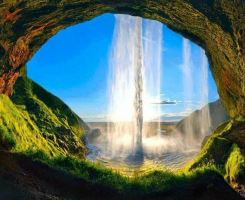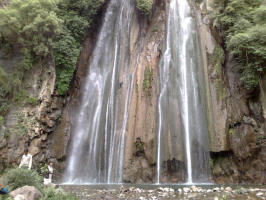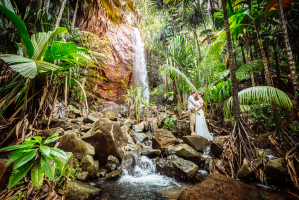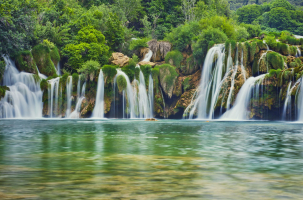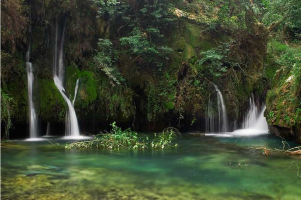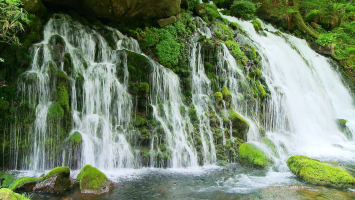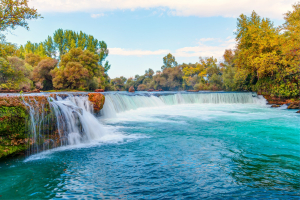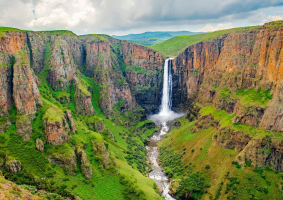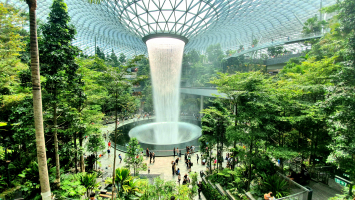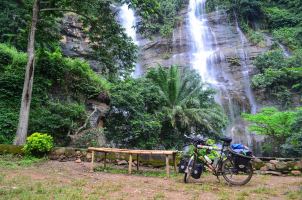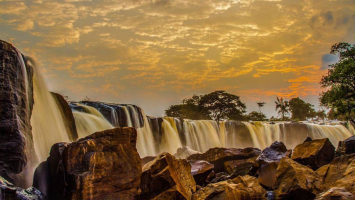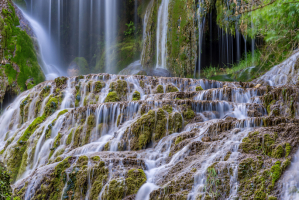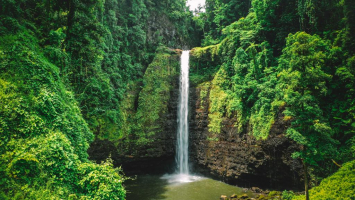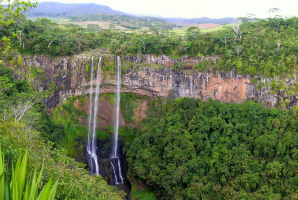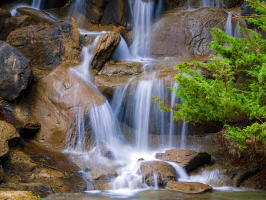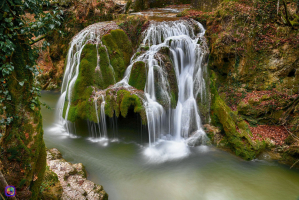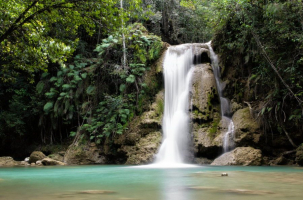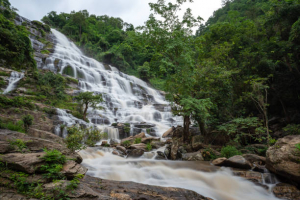Top 10 Most Beautiful Waterfalls in Bangladesh
Among the beautiful patterns of nature in the world, waterfalls are one of them. Waterfall is a tremendous fall in naturally flowing water from a certain ... read more...height. Waterfalls are usually marked as one of natural beauty. There are many attractive waterfalls in Bangladesh also, especially in the hilly areas of Sylhet and Chittagong. In Bangladesh, not only the waterfalls but also the surrounding areas of the waterfalls are full of superb natural beauty. Let’s know about the most beautiful and largest waterfalls in Bangladesh with Toplist!
-
The largest waterfall in Bangladesh, Tinap Saitar, is situated near Rowangchari, Bandarban. The fountain is what the word Saitar means in Bam. It's in the Paindu Canal. You can hire a guide to help you go over a pristine mountain trail to this distant place, where you can set foot and be amazed by the sight of the naturally occurring waterfall.
The incomparable splendor of the waterfall is just mesmerizing view for guests hoping to be rewarded with breathtaking views after a strenuous hike. The waterfall boasts clear water with the flow increasing in monsoon and you can witness the water falling into Paindu Canal from above in monsoon and can even catch a glimpse of a rainbow reflecting on the water on a sunny day.
There are two ways for visitors to get to Tinap Saitar. from Ruma and Roingchari. You can travel to Roingchari from the Bandarban Bus Station. The bus ride barely lasts an hour. After arriving in Roingchari, you must first register your name at the police department before hiring a guide. Through Keplong Para, Paikhong Para, Ranin Para, and Dabachora Para, you can travel to Tinap Saitar.
Location: Roangchhari, Bandarban district
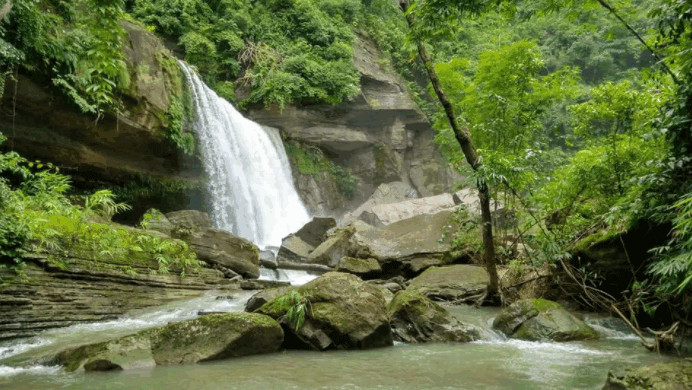
Lrb Travel Team 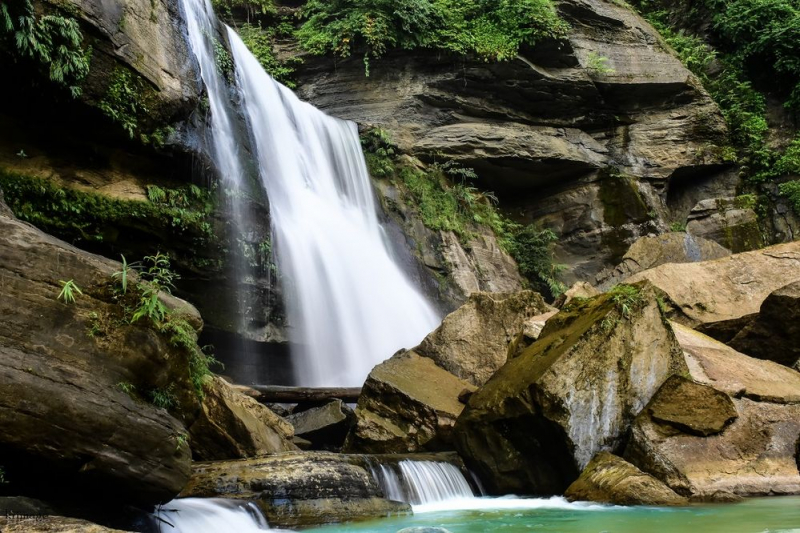
Local Guides Connect -
A waterfall called Khoiyachora Waterfalls can be found in the Chittagong district of Mirsarai. This waterfall's nine steps are incredibly beautiful. Khaiyachara is unquestionably one of Bangladesh's largest waterfalls in terms of both magnitude and structure. The waterfall is extraordinary and mesmerizing, with a total of 9 stages and numerous solitary steps. The nation's tourists are enthralled by the magnificence of this waterfall. To take in the grandeur of the moon's nighttime fountain, many visitors are staying at the mountain's base. You can take river trips and feel the mist of the waterfall as it offers a visual feast for visitors wishing to swim or roam at the foot of the mountain to enjoy the beauty of the waterfall on a moonlit night.
You enjoy it a lot because of its attractiveness. In this location, you can find excitement, adventure, beauty, and trekking. To see Khaiyachara's most breathtaking scenery, you must travel a considerable distance on foot. To take in the stunning scenery and observe the full Khaiyachora and its fall, you must ascend the hill. But during the wet season, it's really challenging to see the entire waterfall.
Khoiyachora Jhorna has been named after its position on the hills of Khaiyachara area. It is 4.2 km east of Dhaka-Chittagong highway on the north side of Borotakia Bazar of Khaiyachara union of Mirsharai Upazila. After going one kilometer using vehicles, you have to walk the rest of the road. You can only drive one kilometer before you have to walk the remaining distance. When you see and go under the transparent water, it appears as though the path is very short after passing the bamboo Sako, the field islands, the mountainous hill trails, canals, and at least 4 hills.
Location: Mirsharai, Chittagong, Bangladesh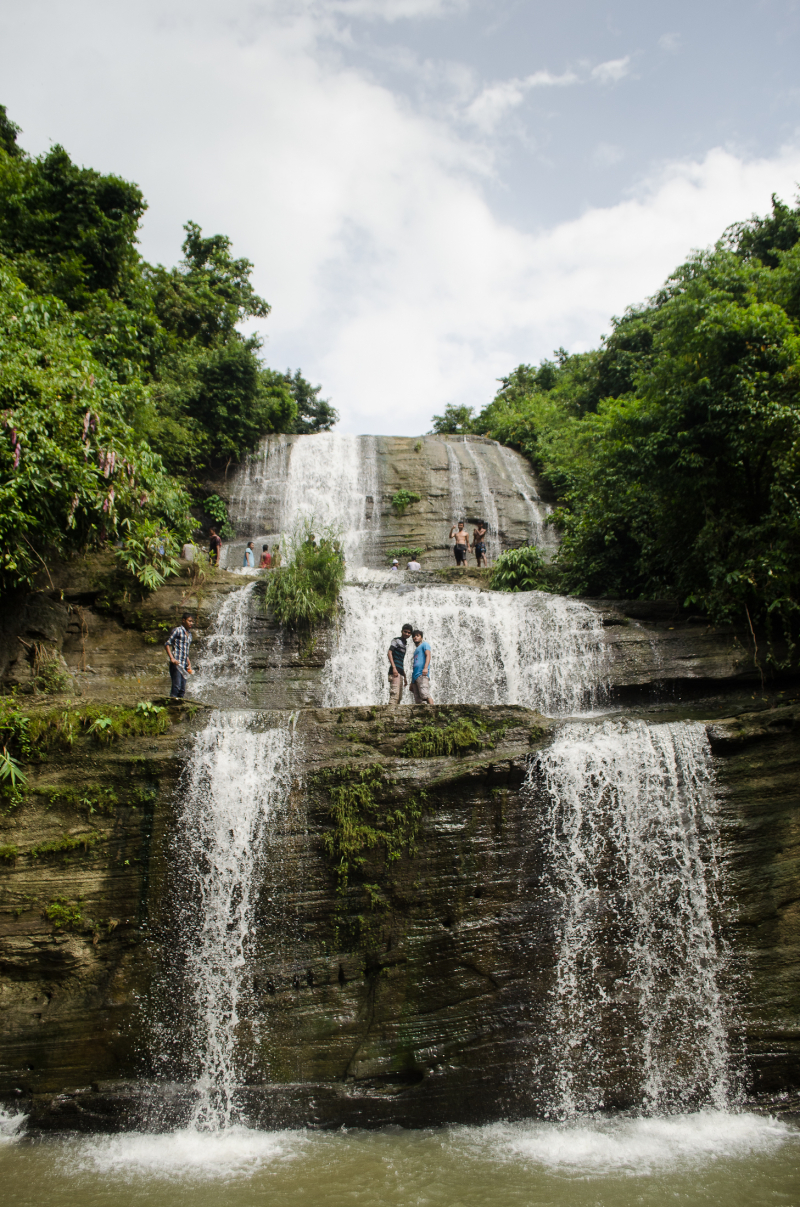
Wikimedia Commons 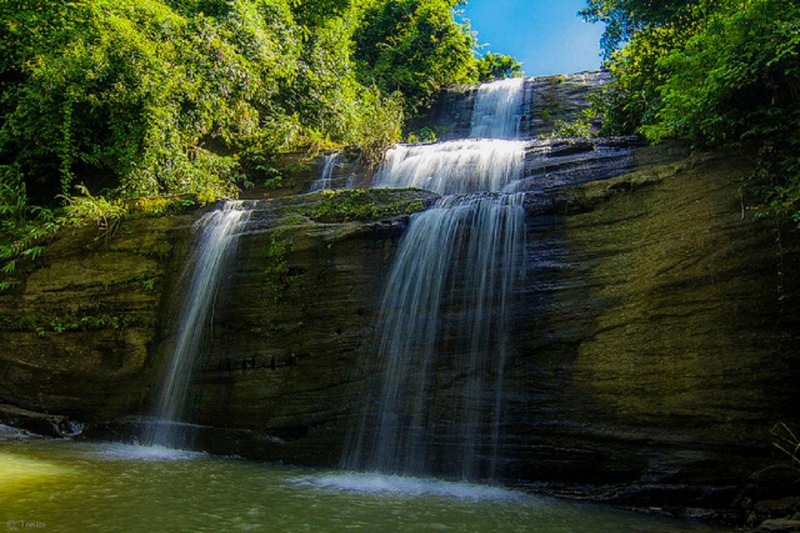
TripAdvisor -
In the Shapmara village of Matiranga upazila in Khagrachhari, there is a waterfall on a mountain called Richang Waterfall. About 10 miles separate Khagrachari City from Richang Waterfall. The word Richang is derived from the Khagrachari Marma language. In the Marma language, Ring denotes water, while Chang denotes something moving from a height. Richang interprets this to signify that water is coming from a high position. Richang is also known as Tarang Telekali.
When you are close to the waterfall, the fountain cascades down from a height of 100 feet, falling upon the rocks and emitting a lovely thunderous sound as it splashes the waterfall stairs. If you want to make memories that you'll treasure, visit this waterfall, which is a natural wonder and is situated in a tranquil location amidst lush hills.
It must descend 235 steps through the hilly slope from the main road. You may hear the waterfall when you are on the steps during the wet season. You will undoubtedly be amazed by the beautiful surroundings and the green, hilly terrain. The fountain draws everyone's attention. Fountain water falls below 100 feet high, which has made the place more attractive.
Location: Shapmara village of Matiranga upazila in Khagrachhari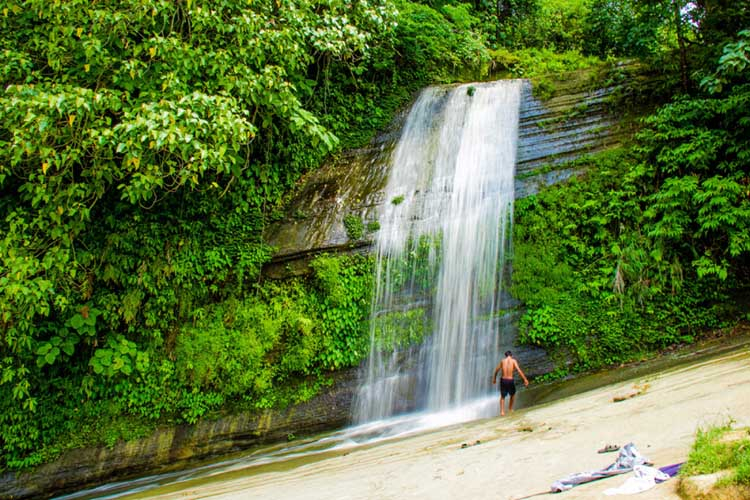
The Asian Age 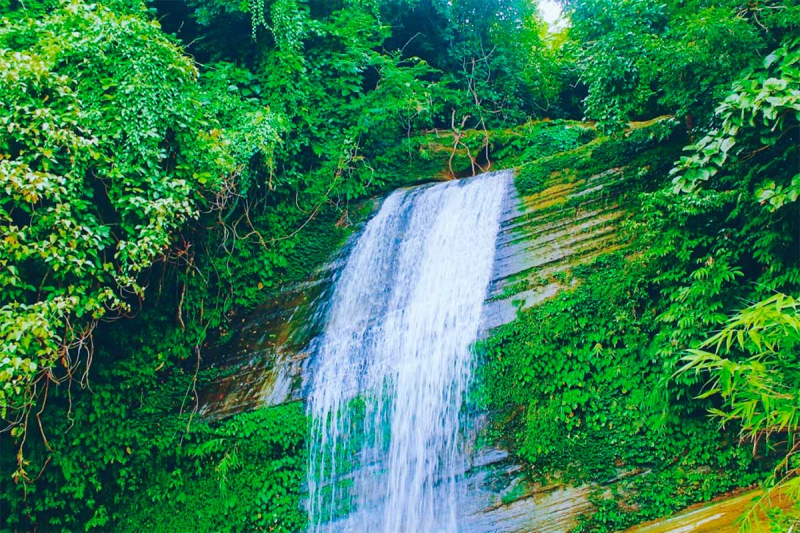
vromonguide.com -
The Moulvibazar district's Barlekha upazilla is home to the Madhabkunda Waterfall. Any advice for waterfalls feels incomplete without including Madhabkunda, the most well-known waterfall in Bangladesh. At this stunning waterfall, water cascades down quickly from a height of approximately 162 feet. This stunning waterfall, which has a powerful water source, is at its most beautiful during the height of the rainy season.
Other waterfalls and fountains have been found in Bangladesh. However, tourists' interest in visiting Madhabkunda waterfall was unaffected. The Bangladesh Tourism Corporation helped the government improve the local restaurants and rest stops. Additionally, there are horizontal tea gardens, Khasia Palli, orange, lemon, betel nut, and betel leaf gardens, as well as Jhum cultivation in select locations.
Although winter is a good time to go, there isn't much water available. Therefore, if you want to fully appreciate Madhab Kunda's splendor, go there during the rainy season. You must travel to the Moulvibazar or Sylhet district to reach Madhab Kunda. Madhab Kunda can be reached in 4 to 5 hours.
Location: Barlekha Upazila in Moulvibazar District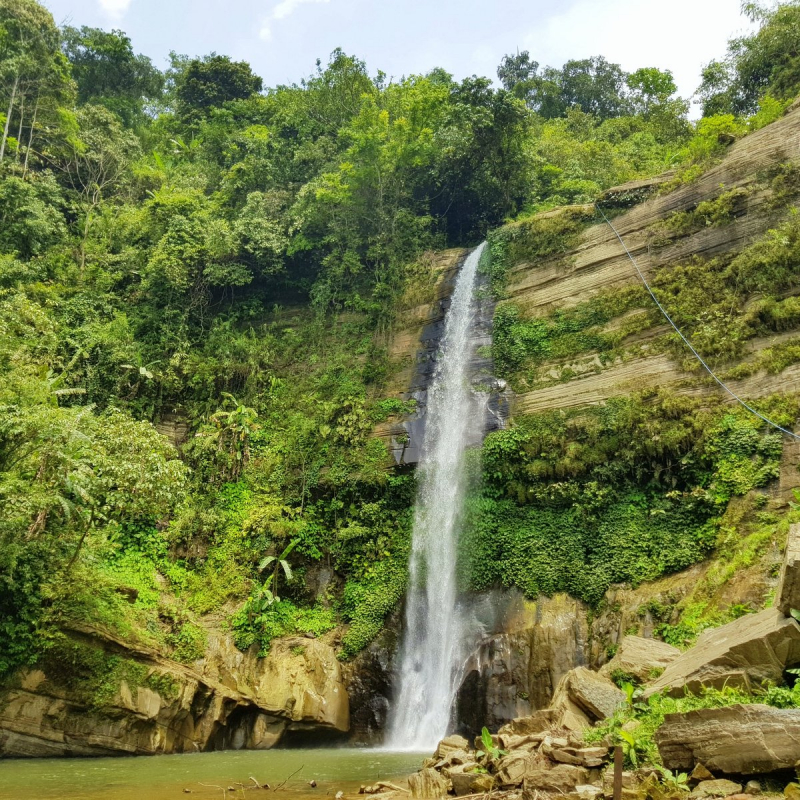
TripAdvisor 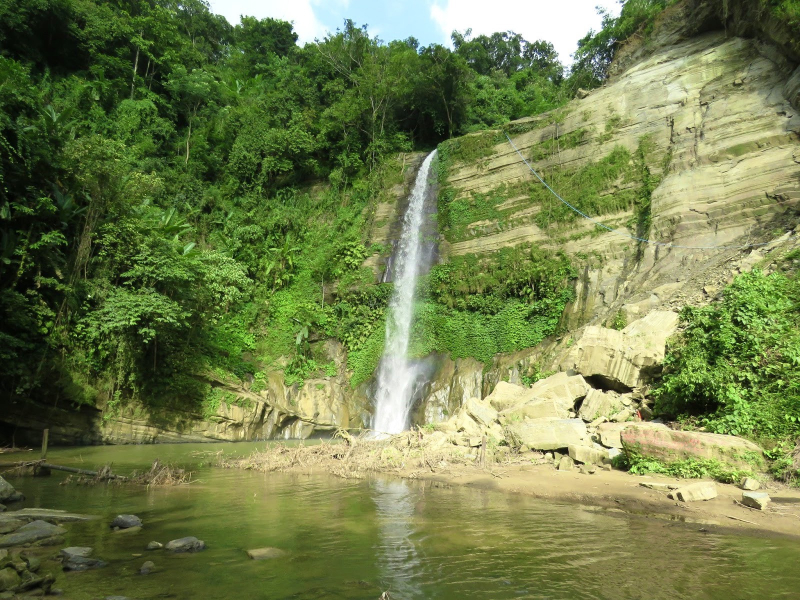
Bangladesh In My Eyes -
The Panthumai waterfall, which is on the border between Bangladesh and India and Meghalaya, is wonderfully magnificent. It is a waterfall in the community of Panthumai. The village is definitely one of Bangladesh's most picturesque settlements. The fountain is located extremely close to the Bangladeshi bank of the Pian River even though it falls on the India-Bangladesh border. The BSF camp departs at the base of the Pantumai Waterfall. Here, the border between the two nations is separated. Here, there is no BGB camp. Going close to the border is therefore risky. You will undoubtedly adore this magnificent waterfall.
Coming down from slopes that are hundreds of feet high is the white water stream. Looking away from the mountainous hillside, it appears like the white sheets have been spread. The truth and beauty of the waterfalls will become clearer the closer you are to the sound of the fountain. The stunning harmony of the mountains and the river will captivate you. It is really difficult to refrain from taking a bath in white water. Bathing is not a problem because there is enough water in the Bangladeshi portion to enjoy the lovely waterfalls. You can take in the entirety of Panthumai's scenery while standing on Bangladesh's border.
If you love a calm river, clear waters, and the solitude of the mountains, and at the same time if you love listening to the endless song of a drunken fountain, then Panthumai in Sylhet is for you.
Location: Near the Indian border in West Jaflong Union, Gowainghat Upazila, Sylhet District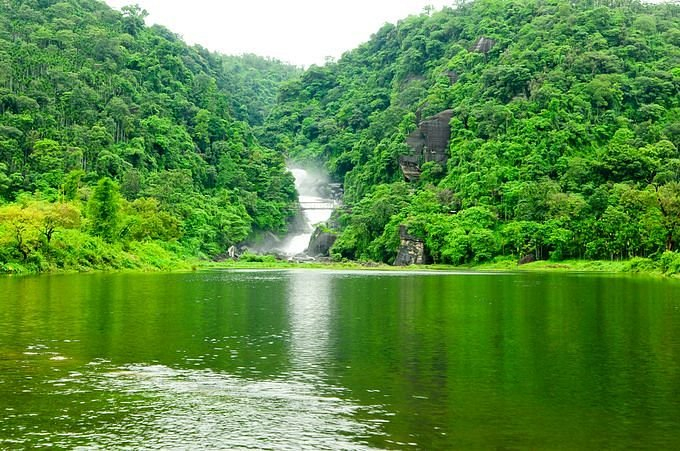
Tripadvisor 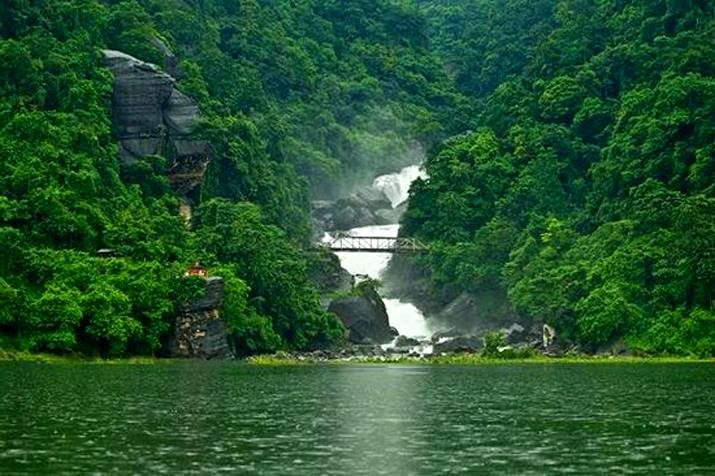
BDSearcher.com -
The Shuvolong waterfall is the place to go if you're seeking for a waterfall surrounded by high heels and breathtaking natural beauty. The only way to get to Shuvolong Waterfalls, which are situated in Barkal Upazila of Rangamati district, is by boat. You will notice Rangamati's splendor as you pass through the steep areas. The beautiful water stream of this spring gives visitors a wonderful feeling. During the wet monsoon season, the Shuvolong Waterfall plunges from a height of 300 feet, captivating tourists who are in a festive mood. This magnificent waterfall cordially invites you to admire it and offer some words of praise.
You'll be entertained by the straightforward way of life of the local natives, the lake, Sharna, the clear blue sky, and the hills all around. The only things seen here are the hills and the water of Kaptai Lake. The mountains have been gracefully preserved by the entirety of the huge Kaptai Lake. You will be drawn to this location repeatedly by its attractiveness. During the rains, the fall is quite beautiful. The lake is the sole route that leads to the waterfall. Visitors arrive there via boat. It is a well-known tourist destination because of the waterfall, tall hills, and beautiful scenery it has to offer. Just before the Shubholong Bazar, there is this waterfall.So that Shuvolong is easily accessible by speed boat or motor boats from Rangamati.
Location: Kaptai, Rangamati district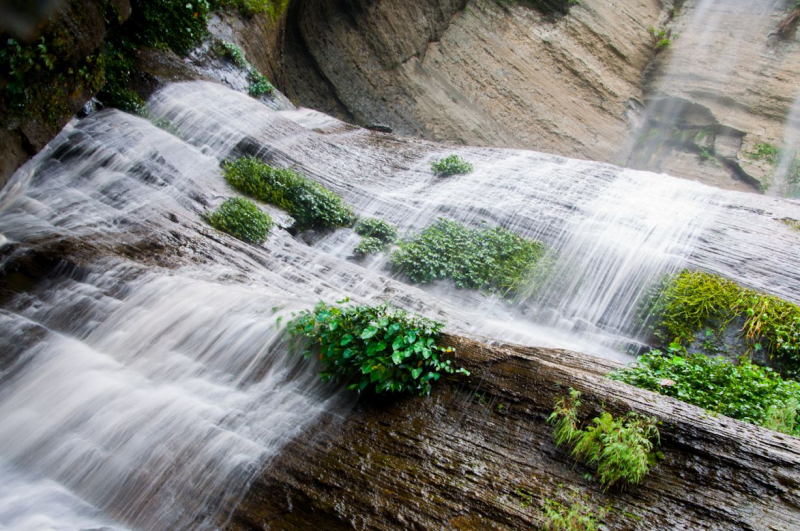
Pinterest 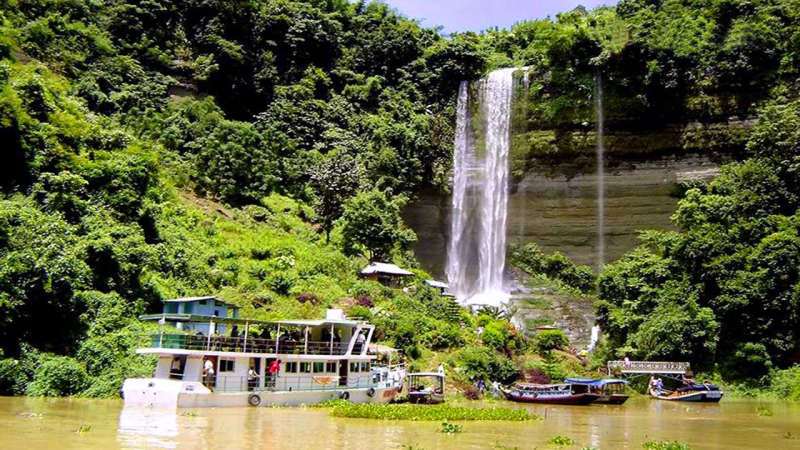
DestiMap -
The Muppochora Waterfall is located in the Bailichari in the Rangamati district at a location called "Bangalakata." In Bangladesh, there is no spot as breathtaking as this one. You will be mesmerized by the fountain's murmur and the water is wiped away by water droplets. You will undoubtedly be more amazed than anything by the fountain's water and the water droplets it sends your way. The water first cascades to the ground in a step that is elevated above the surrounding terrain. Although it is challenging, if you are brave and confident enough to ride the step, you will never forget how beautiful the surroundings are.
It takes 2 hours and 30 minutes to get to Bilaichari after arriving at Kaptai from Dhaka and simultaneously renting a trawler from Launch Ghat. Trawler needs to be reserved from the Bihaichari's Hospital Ghat for Bangalakata. Between thirty and forty minutes pass. Then comes Moppachara Waterfall, which is reached after about two and a half hours of hiking. Although getting to Muppochora is not simple, once you do, all of your fatigue will be washed away.
Location: Kaptai, Rangamati district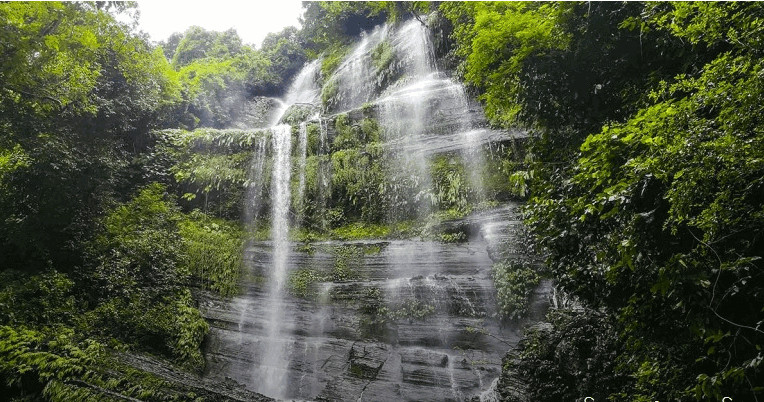
Lrb Travel Team 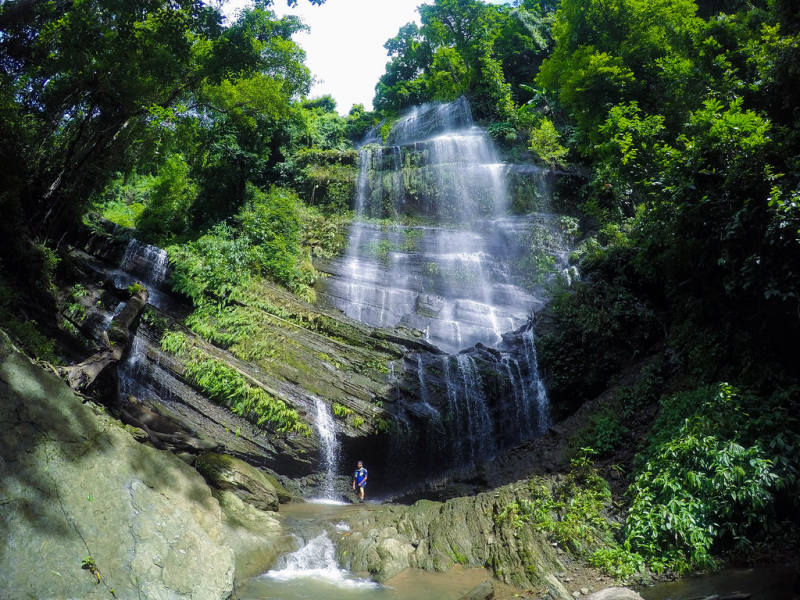
Flickr -
Sylhet's Sangamangini Waterfall is a brand-new tourist destination. On the Bangladesh-India border, Jaflong Zero Point is a 15 to 20-minute walk away. But now that the BSF has a guard, anyone can climb up to the waterfall. It is a really uncommon kind of waterfall with many magnificent steps. You can hear the thunder of the Meghalaya Hills' water from a short distance away from the waterfall. If you continue, you will witness a beautiful arrangement of rocks, trees, and water. Multiple streams of milky white water currents are descending. The water sometimes cascades down through the lush vegetation and other times through the rocks. The bare pebbles occasionally tumble through the lush vegetation. If you want you can bathe in that cool water or you can ride the adventurous step going to the top of the hill. Sometimes water falls down from the third step of the fountain, and some go on the left tunnel. You can see the starting part of the tunnel, the rest is dark. Nobody knows any traces of tunnel paths. It is not possible to go that route because the route is not available.
You need to be more courageous, and vigilant, and, of course, you need to wear shoes with good traction if you want to climb up this slick stone and stream. All of the people flocked to Sylhet during the rainy season to be near nature. Therefore, you might not experience complete seclusion at that moment. However, it is less crowded in comparison because it is not as well-known as Madhabkunda or Bichanakandi. As a result, you may thoroughly enjoy this waterfall.
Location: on the border of India, Sylhet district
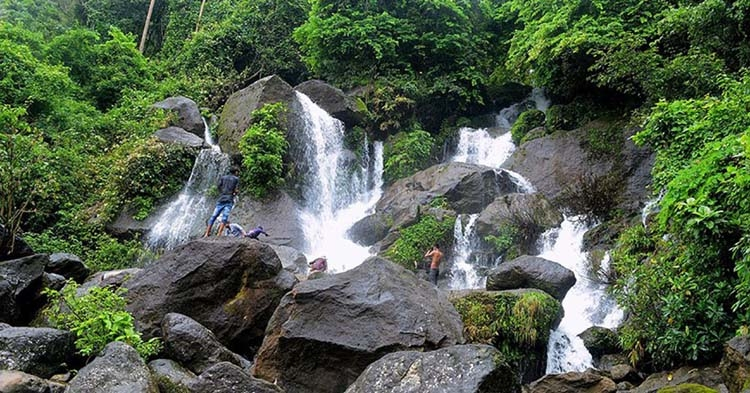
The Asian Age 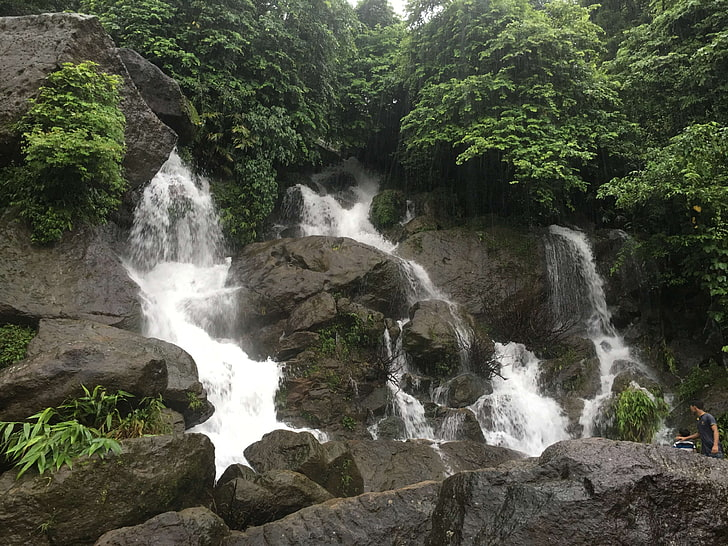
Wallpaper Flare -
Dhuppani Waterfall is located in the Farua union of Bailichari Upazila of Rangamati district. A Buddhist meditator monk started meditation here in 2000, later this locality was known to all the local people. In Tanchanga, Dhuppani Waterfalls means white water Waterfalls. It creates a picturesque scene. The height of Dhuppani water from the ground is about 150 meters. There are several wild animals including deer, wild pigs, cougars, and bears near this fountain. Even there, sometimes the Wild cat and Bear’s footsteps are seen here. This is an interesting thing Dhuppani waterfall has. The sound of the water rushing from this waterfall can be heard from a distance of about 2 km and in the rainy season, it proves to be more distant.
Bus services from Dhaka to Kaptai, Rangamati, are plentiful. Pick your favorite option. It takes the Trawler from the Launchghat, Kaptai two hours and thirty minutes to travel to Bailichari at a convenient time. You will also receive the neighborhood Trawler. The Bilaichari market sells food that you can consume. Uluchchari will be two hours drive from Bilaiichhari. You must hike for almost two and a half hours to get to Dhuppani Para by boat. The journey to Dhuppani Waterfall from Dhuppani Para takes 30 minutes. 200 meters below the hillside from Dhuppani Para is where you'll find the Dhuppani Waterfall.
Location: Orachhari (hilly village), Farua Union of Bilachhari Upazila, Rangamati.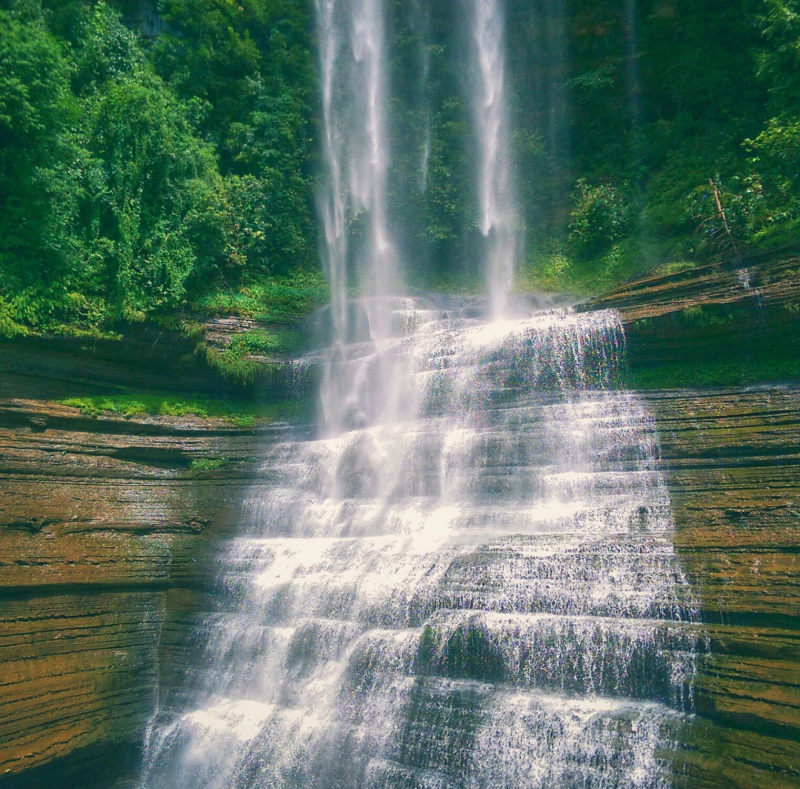
Shamim Shuvo 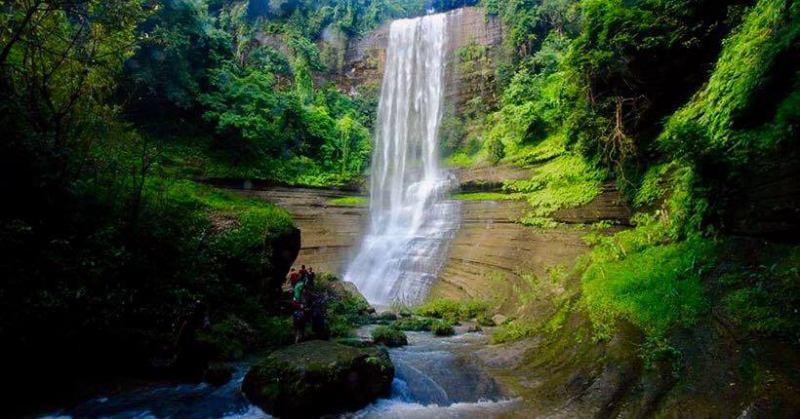
vromonguide.com -
The impressive waterfall near Bandarban is called Amiakhum. Through the slopes of rock and greenery, the waterfall is tumbling down forcefully. Spreads of milky froth are visible coming through the stone. It soaks into the stony stalk's side. The stream and waterfall are both continuous. If you experience the scenes in the majestic mountains and then leave the area, they will stay vividly in your heart. This stunning Amiakhum waterfall is embellished by nature. The heaven of Bengal is thought to be Amakkhum Falls, which is close to the Bangladesh–Myanmar border.
The sound of cascading water and the sound of crashing waves in pristine nature far from the locality attract tourists. Many refer to the Amiakhum Falls as the "land of Bengal" since they are close to the border between Bangladesh and Myanmar.
Tourists from different parts of the country flock to see the beauty of the Amiakhum waterfall, the natural beauty of Bandarban. In the rainy season, the beauty of Amiakhum regains its fullness. Admitting many hardships, facing Amiakhum in the midst of the inaccessibility of the mountain is like a just sacrifice! However, safety should be taken into consideration as the Sangu River is flooded during the monsoon season and there is a risk of flash floods. The fountain can also be visited at any time of the year. It is a bit convenient to go in winter as you have to do trekking.
Location: Tindu of Thanchi upazilla under Bandarban Hill District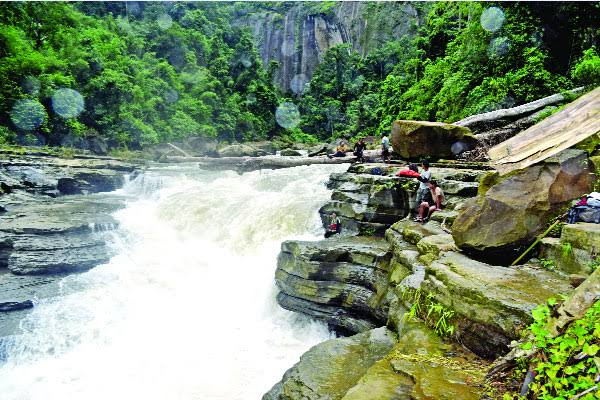
Twitter 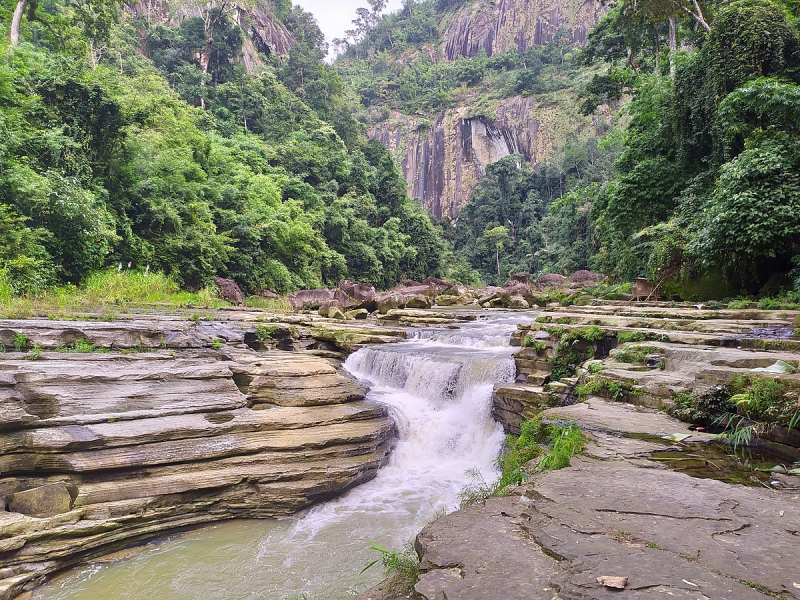
Wikimedia Commons












